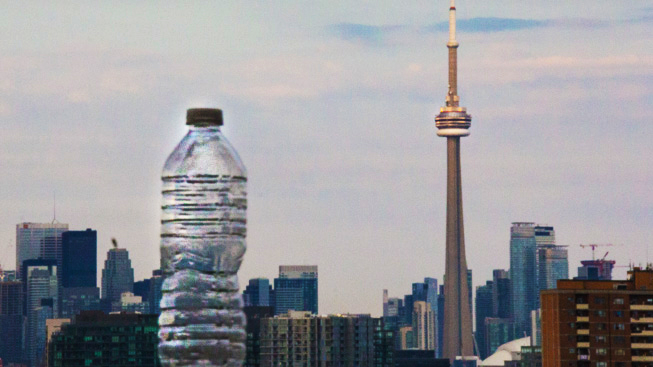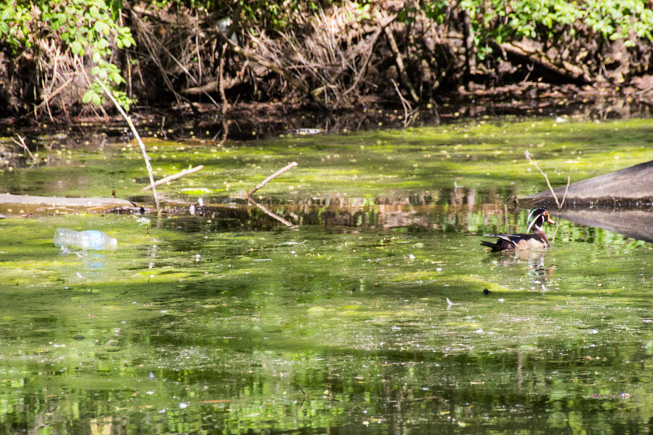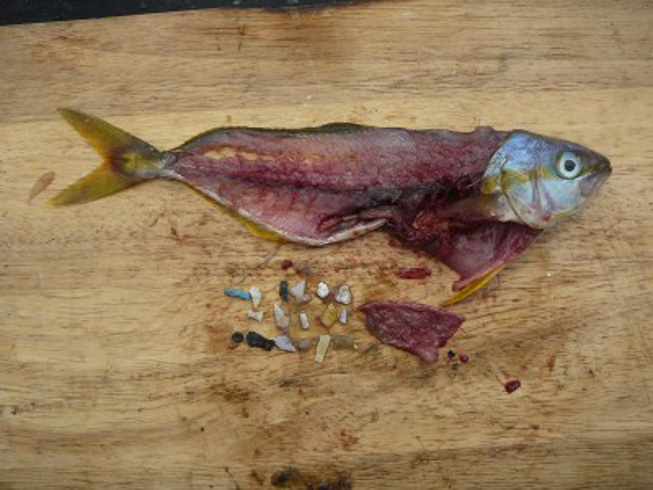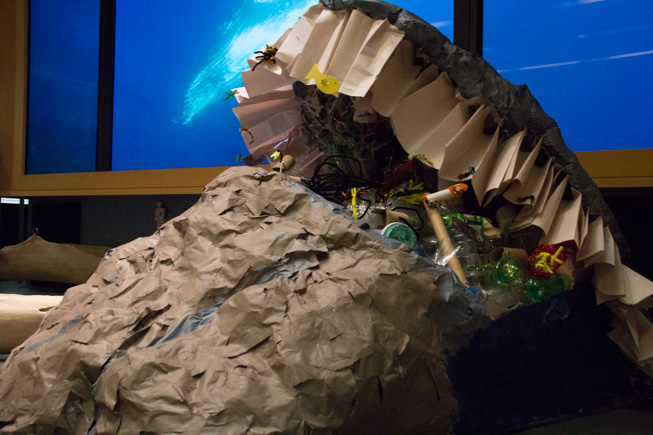The Journey of the Lost Water Bottle

Guest blog written by 2017 Environmental Visual Communication student Cristina Bergman
I will travel the ocean for hundreds of years. I will see more wildlife and more extinction in my lifetime than any human that has ever walked the earth. I fit in your hand, but can be more powerful than a blue whale. I am a plastic water bottle and this is my story.
I am made of polyethylene terephthalate (PET). More than 17 million barrels of oil is used annually to meet America’s demand for plastic bottles. The 500ml of water that filled me came from a well just outside of the Township of Centre Wellington in Ontario. The town tried to buy the well to supply its growing population with clean water, but Nestlé outbid them. In Ontario, it costs companies like Nestlé $3.71 for every million litres of water extracted from a well. That’s enough to fill approximately 2 million single-use bottles.
Once filled with the highest quality well-water money can buy, I was sent to Toronto to complete my life’s mission. I sat on the shelf in a Toronto supermarket, waiting to be chosen to hydrate one lucky individual. Finally, my day came. I was used for approximately 15 minutes, then I was thrown into a recycling bin.
This is where my journey was supposed to end. Once I was placed in that blue bin, I was never supposed to be seen again. But my journey wasn’t over. Up to 20 per cent of Toronto’s recycled refuse ends up in landfill because of contamination. But I was not destined for the landfill either. My impact on this earth will be greater.

As I was being put on to a truck, I fell in to the street, got caught in a rain storm, made my way through the storm sewer and into Lake Ontario. It is estimated that 22 million pounds of plastic enters the Great Lakes every year. Approximately 50% of the plastic that enters the waterways is light enough to float and will travel with wind and water currents to the Atlantic Ocean. The journey to the ocean is a perilous and complex one that is not easily charted or understood. Predicting the journey of a single piece of trash is more difficult than plotting a journey to the moon or Mars. Some currents have been observed to deposit plastic from the United States to the shores of Japan up to seven years later.
When I made it to the ocean, I was struck by the vast beauty. The world’s oceans are the greatest surface, the deepest depths and the biggest resource. But this feeling of wonder and joy quickly turned to sadness and horror.

I saw birds swallow and choke on pieces of plastic as they dove in to the water in search of fish. I saw sharks, whales and dolphins entangled in fishing nets. I saw deserted beaches piled high with plastic debris. I floated next to birds, to fish, to plankton. In some areas of the Atlantic Ocean, 60% of plankton have plastic in their systems. As phytoplankton and zooplankton form the base of the oceanic food chain, most ocean life is likely on a plastic diet. Marine plastic pollution has impacted at least 267 species worldwide, including 86% of all sea turtle species, 44% of all seabird species and 43% of all marine mammal species.
I had seen enough. I wanted to end my journey. This was not what I was created for. Suddenly, my world went black. I thought that my wish had been granted, but I was wrong. I had been swallowed by a young sperm whale.

I reached the depths of this great sea mammal’s stomach and realized I was not alone. The whale’s stomach contained a mixture of plastic debris. As this great creature floated to the eastern shore of Canada, I knew I was her demise. I knew that plastic was killing the oceans. This great whale’s journey may have ended, but mine will continue. I will travel farther and live longer than she will, leaving a path of destruction in my wake.
A note from the author
We are all connected: Torontonians, Lake Ontario, the ocean, the animals and the plastic. Single-use plastic serves a single human for minutes, but will take hundreds of years to decompose. Even if the intention is for the plastic to be recycled, this is not always the case. The only real solution is to say no to single-use plastic. We need to stop the water bottle’s journey before it begins. We need to end our plastic legacy. You can also help by joining a Great Canadian Shoreline Cleanup near you!
